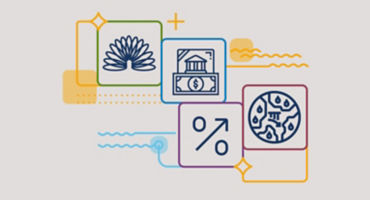- Co-Head of Multi-Asset Platform
Skip to main content
- Funds
- Capabilities
- Insights
- About Us
Asset classes
Hong Kong (香港), Individual
Changechevron_rightThe views expressed are those of the authors at the time of writing. Other teams may hold different views and make different investment decisions. The value of your investment may become worth more or less than at the time of original investment. While any third-party data used is considered reliable, its accuracy is not guaranteed.
As the Federal Reserve (Fed) recalibrates rates to balance price stability and economic growth over time, markets naturally react. While investors have been eager for the arrival of rate cuts to juice their portfolio returns, the context of the cuts matters. The economic backdrop sets the stage for what plays out in the markets from the Fed’s opening act and performance is not guaranteed.
Most often, cuts are initiated when growth has stalled. However, on the dawn of a new easing era, economic growth appears solid — the victory over inflation is the catalyst for rate cuts. Current worries about increasing recession risk are valid, but with GDP growing at 3% in the US, and with Q3 GDP tracking strong, we believe immediate concerns are overblown.
As a result, history can offer examples of rate cuts facilitating a soft landing. Such periods, such as 1995, were characterized by “mid-cycle adjustments” to policy rates, not weak growth and “late-cycle panic.” Should history rhyme, conviction of a soft-landing achievement should encourage believers to be cautious about big cycle bets or being too defensive; many more cuts are priced than is usual in a mid-cycle adjustment — driven by the rapid disinflation.
Experts



Related funds
Three macro assumptions that could be just plain wrong
Fixed Income Portfolio Manager Brij Khurana offers his non-consensus take on three entrenched, but potentially flawed, beliefs in today's market environment.
By
Sector rotation opportunities for nimble credit investors
Following a credit market rally, Fixed Income Portfolio Manager Rob Burn still sees value in higher-yielding sectors but believes investors should stay nimble.

FOMC meeting: Misery loves company
Fixed Income Portfolio Manager Jeremy Forster explores the Fed's decision to hold rates, downgraded economic forecasts, and the implications of balance-sheet policy changes on inflation and market conditions.

Walking a mile in Fed Chair Powell’s shoes
A slow roll on rate cuts by the Fed could frustrate markets and lead to more volatility ahead of the September FOMC meeting. See our take on what to expect for the next few weeks.
By

Massive market sell-off: Justified or an overreaction?
What's behind the global market meltdown, and what should investors consider doing? Global Investment and Multi-Asset Strategist Nanette Abuhoff Jacobson shares her views.

Chart in Focus: Four key areas of opportunities in bonds amid Fed uncertainty
We discuss four key areas of opportunities in fixed income amid Fed uncertainty in the second half of the year.

Capitalizing on rate shifts: Parsing opportunities in the second half
Fixed Income Portfolio Manager Campe Goodman and Fixed Income Strategist Amar Reganti discuss how to capitalize on potential rate shifts in the second half of the year

New era demands a nimble approach to credit
Our expert explains why deep research and an active approach are effective ways for fixed income investors to uncover credit opportunities in today's market.

Exploring active opportunities amid continued regime change
Head of Multi-Asset Strategy, APAC, Nick Samouilhan outlines why today's environment of dispersion, divergence and disruption offers potentially compelling opportunities for active investors.

Credit market outlook: Expect greater opportunities in back half of 2023
Against a backdrop of elevated recession risks and banking-sector stress, Fixed Income Portfolio Manager Rob Burn identifies relative-value sector opportunities in the credit market.
Three macro assumptions that could be just plain wrong
Fixed Income Portfolio Manager Brij Khurana offers his non-consensus take on three entrenched, but potentially flawed, beliefs in today's market environment.
By
Sector rotation opportunities for nimble credit investors
Following a credit market rally, Fixed Income Portfolio Manager Rob Burn still sees value in higher-yielding sectors but believes investors should stay nimble.

FOMC meeting: Misery loves company
Fixed Income Portfolio Manager Jeremy Forster explores the Fed's decision to hold rates, downgraded economic forecasts, and the implications of balance-sheet policy changes on inflation and market conditions.

Walking a mile in Fed Chair Powell’s shoes
A slow roll on rate cuts by the Fed could frustrate markets and lead to more volatility ahead of the September FOMC meeting. See our take on what to expect for the next few weeks.
By

Massive market sell-off: Justified or an overreaction?
What's behind the global market meltdown, and what should investors consider doing? Global Investment and Multi-Asset Strategist Nanette Abuhoff Jacobson shares her views.

Chart in Focus: Four key areas of opportunities in bonds amid Fed uncertainty
We discuss four key areas of opportunities in fixed income amid Fed uncertainty in the second half of the year.

Capitalizing on rate shifts: Parsing opportunities in the second half
Fixed Income Portfolio Manager Campe Goodman and Fixed Income Strategist Amar Reganti discuss how to capitalize on potential rate shifts in the second half of the year

New era demands a nimble approach to credit
Our expert explains why deep research and an active approach are effective ways for fixed income investors to uncover credit opportunities in today's market.

Exploring active opportunities amid continued regime change
Head of Multi-Asset Strategy, APAC, Nick Samouilhan outlines why today's environment of dispersion, divergence and disruption offers potentially compelling opportunities for active investors.

Credit market outlook: Expect greater opportunities in back half of 2023
Against a backdrop of elevated recession risks and banking-sector stress, Fixed Income Portfolio Manager Rob Burn identifies relative-value sector opportunities in the credit market.
Three macro assumptions that could be just plain wrong
Fixed Income Portfolio Manager Brij Khurana offers his non-consensus take on three entrenched, but potentially flawed, beliefs in today's market environment.
By
Sector rotation opportunities for nimble credit investors
Following a credit market rally, Fixed Income Portfolio Manager Rob Burn still sees value in higher-yielding sectors but believes investors should stay nimble.
URL References
Related Insights
We seek to exceed the investment objectives and service expectations of our fund investors and their advisers worldwide
© Copyright 2025 Wellington Management Hong Kong Limited. All rights reserved.
WELLINGTON MANAGEMENT® is a registered service mark of Wellington Group Holdings LLP.
Wellington Management Hong Kong Limited 威靈頓管理香港有限公司 is a private company incorporated with limited liability in Hong Kong, with its address at 17/F Two International Finance Centre, 8 Finance Street, Central, Hong Kong. It is licensed and regulated by the Securities and Futures Commission of Hong Kong with CE Number AJB478.